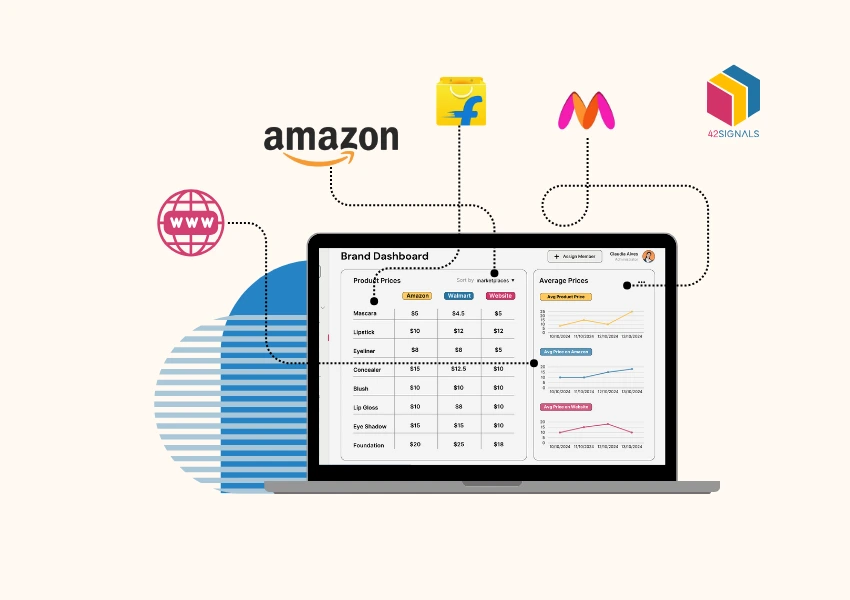What is Share of Voice
Share of Voice (SOV) is a metric that measures a brand’s or company’s share of the total online conversation or advertising space within a particular industry. It is used to evaluate a brand’s visibility and influence as compared to its competitors.
One of the best keyword research services is utilizing share of voice. It’s usually calculated as a percentage of the total number of conversations or mentions related to a particular brand, compared to the total number of conversations or mentions related to the industry as a whole.
SOV can be used to evaluate the effectiveness of a brand’s marketing or advertising campaigns, as well as its overall brand awareness and reputation. A high SOV generally indicates a strong market position, while a low SOV may indicate the need for increased marketing efforts or strategy changes.
What is Share of Voice in Social Media
Social Share of Voice specifically measures a brand’s or company’s share of the online conversation within social media platforms. It is used to evaluate a brand’s visibility and influence within social media.
The calculation of social SOV is similar to that of SOV, but the metrics used focus on social media activities such as mentions, hashtags, shares, likes, and comments related to a particular brand or industry.
Social SOV can be used to evaluate a brand’s performance on social media platforms and compare it with its competitors. It can also provide insights into the topics, themes, and sentiments associated with a brand’s social media mentions, which can be useful in developing social media strategies and campaigns.

Where to Find SOV
Share of voice can be found using a variety of tools and methods, depending on the channels and platforms that you want to measure.
Brands can use social media monitoring tools, ad tracking platforms, and industry reports or manually track their SOV by monitoring brand mentions, hashtags, and other relevant metrics across social media platforms, blogs, forums, and other online channels.
While this method can be time-consuming, it can provide a more granular view of your SOV and allow you to track emerging trends and topics in real time.

How is Share of Voice Calculated?
The exact calculation for SOV may vary slightly depending on the specific context, but the general formula is:
Share of Voice = (Brand’s Total Mentions/Total Market Mentions) x 100
For example, if your brand has 100 mentions on social media in a month and there are a total of 1000 mentions related to the industry, then the share of your voice would be 10% ((100/1000) x 100).
It’s important to note that SOV is just one metric, and it’s important to consider other factors such as sentiment, engagement rates, and conversion rates when evaluating your brand’s performance in the market.
Additionally, SOV can be calculated for different channels, such as social media or digital advertising, and can vary depending on the specific context.
Why is Share of Voice Important?
SOV is an important metric because it provides insight into a brand’s visibility and presence in the market compared to its competitors.
Share of voice helps brands understand their market position, evaluate the effectiveness of their marketing efforts, and identify trends and topics that are relevant to their target audience.
It can provide valuable insights into a brand’s performance, market position, and growth potential. By tracking the share of your voice across different channels, you can make informed decisions about your marketing and business strategies and stay ahead of the competition over time.
When is SOV Used
Share of voice can be used in a variety of contexts and situations, including:

- Competitive analysis: By tracking SOV over time, brands can identify trends and changes in their market position and adjust their strategies accordingly.
- Campaign tracking: SOV can be used to evaluate the effectiveness of marketing and advertising campaigns that are driving engagements and generating leads with the help of key metrics such as website traffic and conversion rates.
- Product launches: It can be used to analyze the success of product launches and new market entries.
- Investor reporting: SOV can be included in investor reports as a measure of a brand’s market position and growth potential.
- Industry analysis: It also helps identify trends and topics that are relevant to a particular market or industry.
- Brand reputation management: SOV can be used in brand reputation management to monitor and address negative sentiment surrounding a brand and take action to address issues before they escalate.
- Content marketing: SOV can help evaluate the impact of different types of content and channels on a brand’s visibility and engagement.
- Market research: It can help gain insights into consumer behavior identify customer needs and preferences and adjust their strategies to better meet those needs.
SOV Analysis
Share of voice analysis is the process of tracking and evaluating a brand’s market position and performance compared to its competitors, which can help gain insights into customer behavior and preferences.
This analysis typically involves tracking the volume of mentions or conversations related to a brand or product category across various channels, such as social media, blogs, forums, and news sites.
It is a powerful tool for understanding your brand’s market position and identifying opportunities for growth and improvement.

Image Source: Corporate Finance Institute
By monitoring SOV data across multiple channels, regularly analyzing the data, and adjusting your marketing strategies accordingly, you can stay ahead of the competition and achieve your business goals.
How Retail Analytics Tools Help with SOV
Retail analytics tools can help with SOV analysis by providing businesses with automated data collection, sentiment analysis, channel-specific metrics, competitive analysis, and real-time and accurate monitoring of the data. It can also help with customer segmentation, determining which channels are contributing most to your SOV, sales forecasting based on historical trends, product performance analysis, and competitive benchmarking.
By leveraging eCommerce insights tools, like 42Signals, you can gain a deeper understanding of your market position and identify opportunities for growth and improvement.







